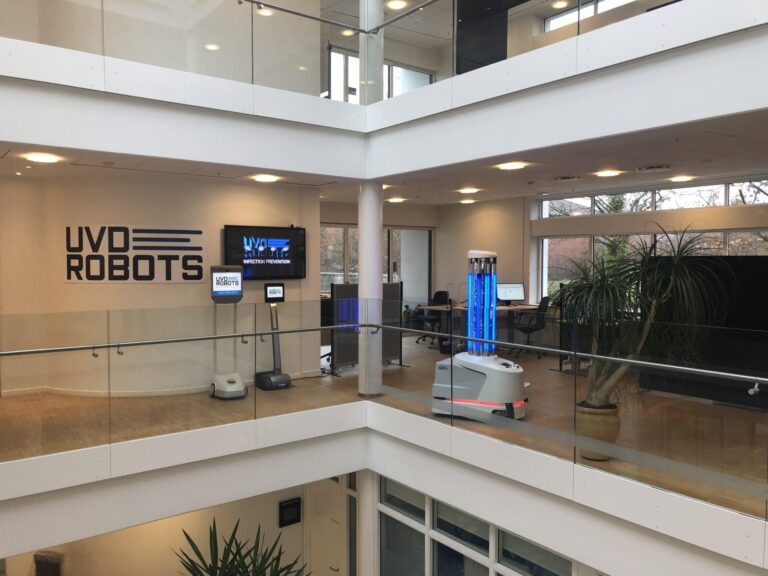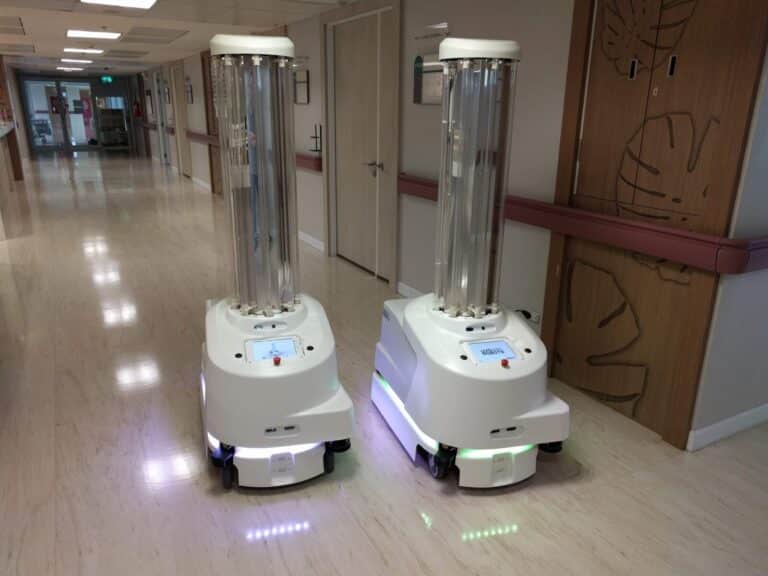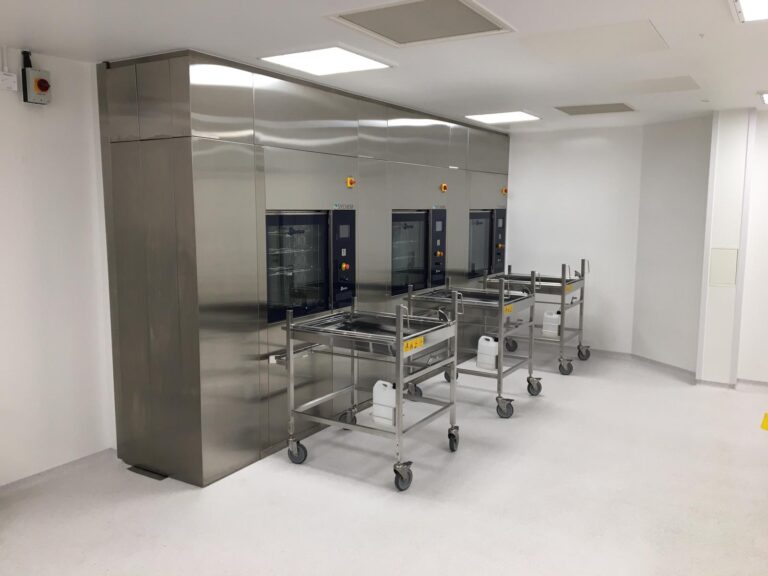Shining a ‘UVC’ light on hospital cleanliness. The health board at Derby and Burton Trust Hospitals have authorised the use of robot-controlled UV-C light to aid the disinfection process. These unmanned systems are used to sterilise wards, oncology settings and operating theatres efficiently.
The inclusion of UVD robots in hospitals utilises futuristic technology to further assist in their efforts of infection prevention. An award-winning system, the units are deployed after-hours to ensure the rapid and complete decontamination of operating suites, outpatients, and large, non-clinical areas. In addition, the use of UV-C technology simplifies the sterilisation process and creates a safer alternative to HPV decontamination. Helen Forrest, the Infection Prevention and Control Lead Nurse, said: ‘We’re really pleased and excited to have these new UVD Robots available at our Trust’.
What are UVD Robots?
The machines stand at around 5 ft tall and are sold for just over £70,000. UVD Robots are battery-powered, with the ability to destroy up to 99.999% of bacteria. The powerful, intense ultraviolet light revealed that one of the bacteria it can neutralise and kill is SARS-CoV-2, the coronavirus responsible for the current Pandemic. Paul Hunter, a professor at the University of East Anglia said, ‘That UV light inactivates SARS-CoV-2 is not surprising’.
UVC light is a powerful tool that can be used to disinfect surfaces, water, and air. Dan Harding, managing director of Sychem, the UK Distributor for UVD Robots added, ‘UV Disinfection is a proven means of disinfecting areas and destroying microorganisms. It offers a very innovative method of disinfecting and decontaminating an area, by using high doses of UV-C light’.
Helen also said, ‘This state-of-the-art technology will allow us to enhance our excellent, existing environmental cleaning service, and keep our hospitals safe for our patients, including those who are most vulnerable. This is a tried and tested technology in environmental disinfection and will enable us to keep key clinical areas, such as Theatres, well disinfected and safe for our patients’.
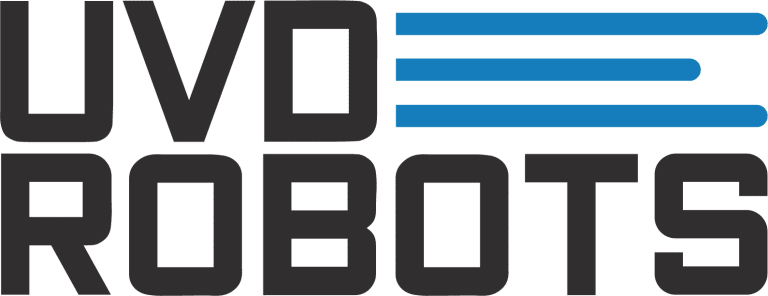
The decontamination process takes place out of hours, with a 2 ½ hour run time. After the domestic service team carries out the initial deep clean, the UVD Robot’s disinfection process can occur. The operator will ensure that the appropriate measures are taken, with all necessary doors open and equipment where it should be, from there the UVD robot will act independently for the decontamination process. Dan Harding also said, ‘The UVD Robot is exceptional in its performance and is completely autonomous, which is really cutting edge in the world of interrupting key transmission pathways in healthcare. After treating a room, UV light kills the virus by disrupting its membrane, causing its DNA to break apart’
With innovation and efficiency at their core, the UVD Robots can also be used for the decontamination process in individual operating theatres. By carrying out the process between operating procedures, it sterilises the room for the subsequent surgery to occur safely. Furthermore, unlike the manned units, these autonomous machines allow the UVC light to remain on whilst the robot moves between the various mapped stations, killing a broad spectrum of organisms as it moves.
How does it work?
A typical UVD Robot operation:
– The cleaning staff order the robot to areas via a mobile phone app or tablet.
– The robot then travels to the area and enters the room
– The cleaning staff go through a security checklist
– The robot disinfects the room, which takes 10 minutes per single occupancy room
– The robot notifies when the process is completed
– The report is made, and the UVD robot returns to its station
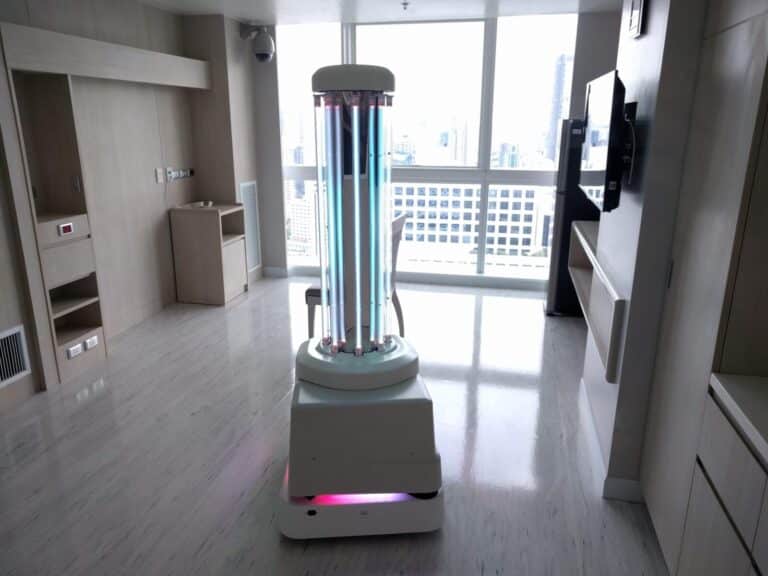
The UVD Robots are fitted with many innovative capabilities that are revolutionising decontamination processes in healthcare. Unlike previous manned units, these unmanned UVD Robots do not need to wait for the light to cool down before being moved. UVD Robots only require a 13-amp socket to charge and have ease of movement, with the ability to be moved to an unmapped area via an app on phones, or a tablet PC. UV light is invisible to the human eye, however UVD Robot systems are fitted with lamps that show colour when switched on, so you know they are operating.
Burton and Derby trust Hospitals have expressed interest in installing a docking system, rather than relying on a manual charge- this is something that can be customised based on a facilities request and brief. The Hospitals are looking to train up to 10 members to use the robots, and aim to have at least one machine at each of the district general hospitals. With a user-friendly design for an efficient disinfection process, UVD Robots can be operated by everyday cleaning staff.
There are currently two UVD robots circulating in the Hospitals, one for the operating theatre at Derby and one at Burton for the pre-mapped general areas. By using these systems, Hospitals are reaching their maximum potential with staff, as they can undertake other tasks while the unit is working.
Is this the future of Hospital cleaning?
The use of UVD Robots in the regular cleaning cycle aims to prevent & reduce the spread of infectious diseases, viruses, bacteria, and other harmful microorganisms. By developing a standard of use for UV light in healthcare, it aids a safe, reliable system that eliminates the risk of human error.
Sychem Ltd, said: ‘We thank Derby and Burton Hospital Trust for allowing us to demonstrate the full range of what our robot can offer in terms of performance and labour-saving costs.
There’s a high level of interest across the UK for our robot, and other trials are underway. Using the system, hospitals can guarantee a 99.99% disinfection of wards and other areas, significantly reducing the risk of patients, staff and relatives contracting hospital-related infections.’
Visit our LinkedIn to find out more about Sychem’s latest news and events.









